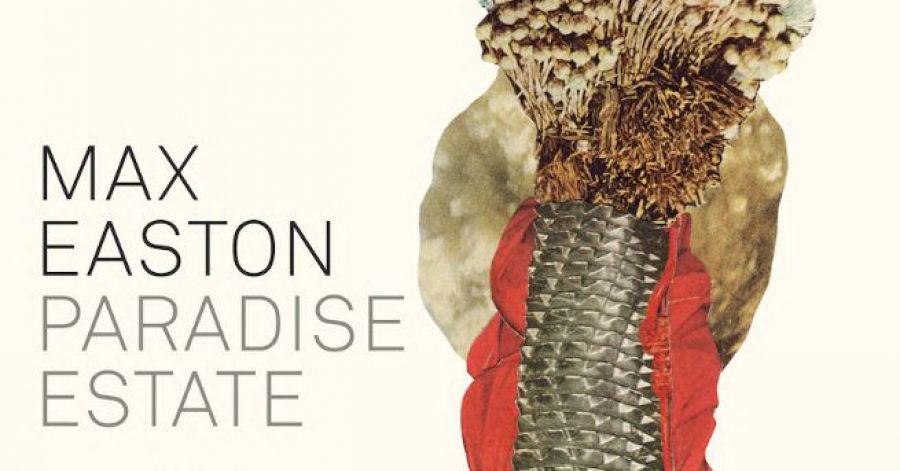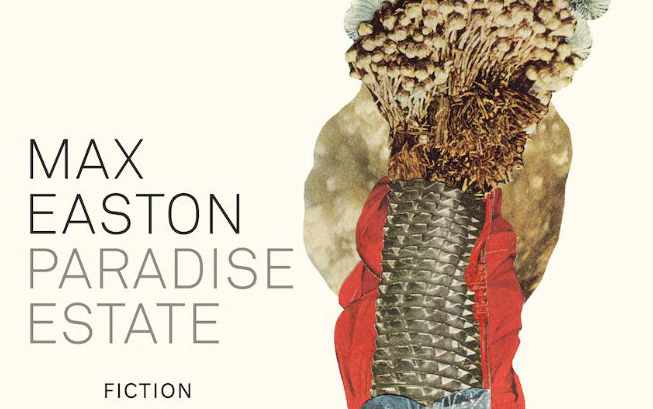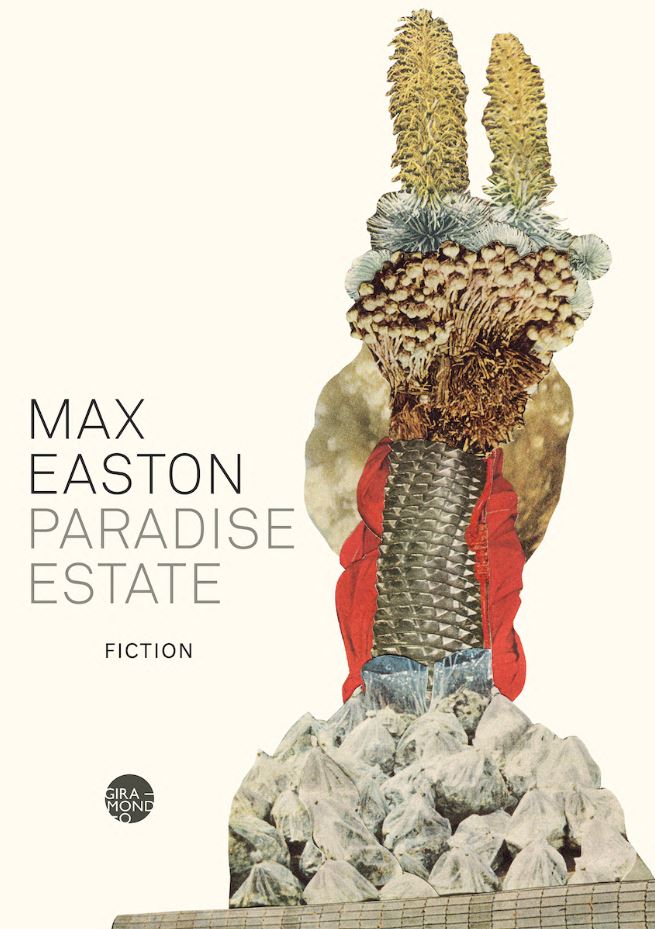
- Free Article: No
- Contents Category: Fiction
- Review Article: Yes
- Article Title: Share-house mould
- Article Subtitle: Max Easton’s ‘collectively minded’ novel
- Online Only: No
- Custom Highlight Text:
Max Easton’s second novel begins in early 2022 when an ensemble of thirty-somethings loosely connected through mutual friends and subcultural scenes decide to lease a four-bedroom share house. The house in Sydney has its flaws. Mould colonies grow on ceilings and walls in a ‘rich spectrum’, aided by a series of La Niña weather events. Situated just off a main road and surrounded by high-rise apartment buildings, the property offers little in the way of privacy. The fascia gutters are blocked by champagne corks popped from the apartment balconies above.
- Featured Image (400px * 250px):

- Alt Tag (Featured Image): Morgan Nunan reviews ‘Paradise Estate’ by Max Easton
- Book 1 Title: Paradise Estate
- Book 1 Biblio: Giramondo, $32.95 pb, 304 pp
- Book 1 Cover Small (400 x 600):
- Book 1 Cover (800 x 1200):
Within short, episodic chapters, Easton’s third-person narration shifts between Paradise Estate tenants, carefully building a portrait of a household desperate for social connection. Scholarly couple Alice and Nathan see the share house as an opportunity to re-engage with ‘real struggle’, having spent the early stages of the pandemic living rent-free with Alice’s father. Tradie and semi-professional rugby league player Rocco has returned to Australia from Italy, while sculptor, and hospitality worker Beth joins the house after a stint with her parents, where she was recovering from a serious car accident.
Preceding each chapter is an italicised fragment of less than a page, ranging from flashbacks that inform plot or characterisation to vignettes that signpost the narrative’s temporal position while adding texture to the broader world of the novel (the 2022 federal election, a State of Origin match, Rocco’s quest for a panini amongst a suburban food desert limited to a McDonalds, an RSL and a servo). These fragments are a particularly inspired structural touch, performing as micro-fictions which, through their brevity and self-containment, effectively charge otherwise mundane situations with intensity and humour, often closing with a pithy quip (‘Sunny wanting to yell at the world: “Just let me shit where I eat!”’) or something more suggestive (‘they were living together in a sharehouse with four people who seemed to Helen to be deeply untrustworthy’). Importantly, this approach allows for the inclusion of detail that might have felt gratuitous in the body of the narrative, but adds to Easton’s nuanced composition of both character and place.
As a household, there is general opposition to things like rugby union, landlords, escape rooms, and paint-and-sips (or really any of the ‘corporate getaway traps’ that have edged out local businesses in Sydney’s inner-west). There is more enthusiasm for rugby league, underground music, Resch’s beer, and Marxist cultural critique. Among other things, the group disagrees on the standard of care to be provided to feral cats (specifically one flea-ridden feral called ‘Dale’, named after the ‘black sheep’ of the household) and the ethics of housemates electing to co-parent a child. They otherwise attempt to support each other in activities which include occupying public spaces through DIY music gigs and guerrilla gardening, attending reading groups, and supporting grass-roots community sport.
Indeed, much of the novel is spent detailing the character’s array of side hustles and passion projects. Alice and Nathan devotedly attend political rallies with Nathan’s colleagues at his ‘socialist research hub’ called ‘the Centre’. Beth supplements her income through Twitch streams and Only Fans, while Rocco arduously prepares for a chance to compete for the Italian national team in the upcoming Rugby League World Cup. Sunny makes zines, plays music, and archives lost recordings from Sydney’s underground punk and hardcore scenes, while also taking responsibility for gathering Walt’s papers. Walt, like Thomas Pynchon’s Pierce Inverarity from The Crying of Lot 49 (1963), has left behind a trail of cryptic correspondences, much of which has been smuggled onto op-shop bookshelves and feature titles like ‘The Manifesto of The Western Sydney Separatists (Third Revised Edition)’.
Despite a relative lack of hobbies, it is Helen who is the anchor of Easton’s novel. Her response to crisis – both personal and public – is marked by inaction and passivity. Whether she is reflecting on increasingly dire climate events (‘As the mould rushed through their house, and the news carried images of Lismore being washed away, she felt the same oblivious complacency’), her job at the local cinema (‘Most days, she realised she was waiting for the cinema to go bust so she wouldn’t have to make a decision’) or advising disillusioned housemates (‘Just do what I do … try not to think about it’), Helen’s lack of affective response – mirrored aesthetically by Easton in the muted, nonchalant prose – becomes representative of a broader cultural sickness.
Easton stages a series of attempts to counter this disaffection. While the narrative never allows a clear antidote, neither does it wallow in despondency. Instead, the book’s emphases resonate with what Ben Lerner – speaking in a 2015 interview for The Public about his novel 10:04 (2014) – has described as ‘glimmers of potentiality’, moments that glimpse at alternative futures beyond the cultural hegemonies imposed under late-capitalism (fittingly, Lerner also cites the Antonio Gramsci quotation which features as an epigraph to Paradise Estate). As if from the vantage point of a Hurlstone Park high-rise, Easton expertly animates such glimpses, once again enriching a compelling contemporary milieu.



Comments powered by CComment